After an intensive period of preparations, our workshop was on!
Initially, we had planned to host two different events: a consultation, an expert meeting with specialists working on topics that have a direct connection to our project and (with external financial support) a workshop. When our ideas took shape, the merging of these two gatherings seemed to us to be to everyone’s advantage and an excellent opportunity to share and discuss experiences. It was also a choice opportunity to share aspects of our research with a wider, general public by organizing a public lecture in the National Museum in Warsaw.
We welcomed colleagues from Germany, Switzerland, Norway, England, the Netherlands, Belgium, France, and the US, as well as colleagues here in Warsaw. In the framework of our project we had invited the participants to look at the First Cataract region and stream upwards to Esna in Upper Egypt from two angles, from both the Egyptian and the Nubian Christian traditions for a balanced view on relations in e.g. history, trade, art, architecture, archaeology, literature, liturgy during the 6th to the 15th centuries.
The enthusiastic response had led to a rich programme.
 The logo of the workshop, showing two birds with twigs in their beaks, symbolise the two regions, their connection and the goods/ideas they gave each other, regardless of borders or other obstacles. The bird to the left is from the decoration of a piece of Early Islamic Aswan ware, while the bird to the right was found on a local Nubian piece from the Christian period. Aswan ware was traded in Upper Egypt and down south to the second cataract and beyond (design by Dobrochna Zielińska, after an idea by Katarzyna Danys, from W.Y. Adams, Ceramic Industries of Medieval Nubia I, Kentucky University Press 1986, figs. 219/31-2 and 168/31.4).
The logo of the workshop, showing two birds with twigs in their beaks, symbolise the two regions, their connection and the goods/ideas they gave each other, regardless of borders or other obstacles. The bird to the left is from the decoration of a piece of Early Islamic Aswan ware, while the bird to the right was found on a local Nubian piece from the Christian period. Aswan ware was traded in Upper Egypt and down south to the second cataract and beyond (design by Dobrochna Zielińska, after an idea by Katarzyna Danys, from W.Y. Adams, Ceramic Industries of Medieval Nubia I, Kentucky University Press 1986, figs. 219/31-2 and 168/31.4).
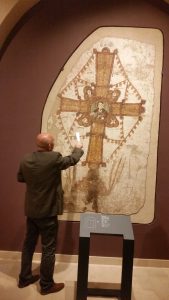
Adam in the Faras Gallery
Our guests assembled at the National Museum (NMW), unfortunately without Naïm Vanthieghem. Strikes in Belgium and France had forced him to stay home and he was sorely missed. The tour through the Faras Gallery was organized and guided by Dobrochna and Adam. With so many experts from various backgrounds, there was already discussion wandering from objects, inscriptions and paintings displayed to their connections, history and interpretation.
This tour was followed by a much appreciated public lecture by Jacques van der Vliet (Leiden University/Radboud University Nijmegen) in the Cinema Room of the NMW. Jacques works (and has published widely) on Coptic and Greek texts and inscriptions both from Egypt and Nubia. In his lecture Nubia in Christian Africa he sketched an overview of the different scholarly approaches through time to this area in Christian Africa and investigated concepts of identity and belonging on the basis of text and language. Moreover, he proposed to extend the area to Ethiopia, also part of Christian Africa, whose ties with Nubia and Egypt have never been properly researched.
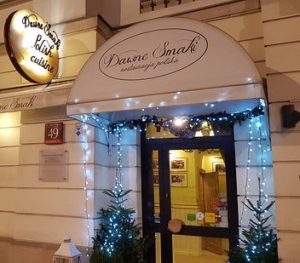
After Jacques’ lecture, we walked together along Nowy Świat Street decked in festive Christmas illumination to the Dawne Smaki restaurant, specialising in traditional Polish cuisine.
On Thursday 19 December, we started early with a very full and interesting programme.
The day was divided into four themes. After a short introduction, movement of people was explored in session I. Bruce Williams’ animated lecture on the different types of Nile boats represented in graffiti from different sites in Nubia and Aswan highlighted the travelling of goods and ideas in the Nile Valley. On the basis of the findspots of 5th-7th century terracotta lamps with the name of one of the bishops of Syene/Aswan called Joseph, Stefanie Schmidt explored networks from Aswan to Upper Egypt, down south into Nubia and reaching the Red Sea Coast as far as Adulis (present day Eritrea). Linguistic evidence of cross border travel of people was given by Adam Łajtar as well as Naïm Vanthieghem and Grzegorz Ochała. Adam presented his new translation of the enigmatic Greek so-called Kudanbes inscription in the Monastery of Anba Hadra near Aswan, dated 7 April 1322: a certain Bishop Joseph, travelling to his Nubian see after being ordained in Cairo, lists his entire career and petitions the Archangel Michael as mediator to grant him entrance to the Kingdom of Heaven. Dayr Anba Hadra, the southernmost monastery in Egypt, has preserved evidence of several Nubian visitors but also of Nubian monks who most probably lived there. Grzegorz presented his and Naïm’s joint work on Arabic names in Old Nubian texts from the stronghold of Qasr Ibrim, the seat of the eparch (governor) of Nobadia under the kings of Makuria, and their ideas on the identity and provenance of these persons. Later that afternoon, different aspects of Dayr Anba Hadra and Qasr Ibrim would be investigated by Lena Krastel, Joost Hagen and Geoffrey Khan.
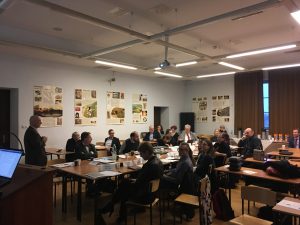 After much deserved coffee, Session II continued with archaeology, discussing sites in Upper Egypt with a Nubian link: Andreas Effland focussed on the fortification of Qal’at al-Babayn just south of Edfu, which has similarities with the fortress of Hisn al-Bab on the First Cataract near Aswan and Nubian fortifications further south. Hisn al-Bab, an imposing structure, played a role in trade between Nubia and Upper Egypt, and on this topic we missed Pamela Rose, director of excavations at Hisn el-Bab, who was unfortunately unable to attend. Amandine Mérat has just started documentation and study of the textiles found in these excavations, on which she reported.
After much deserved coffee, Session II continued with archaeology, discussing sites in Upper Egypt with a Nubian link: Andreas Effland focussed on the fortification of Qal’at al-Babayn just south of Edfu, which has similarities with the fortress of Hisn al-Bab on the First Cataract near Aswan and Nubian fortifications further south. Hisn al-Bab, an imposing structure, played a role in trade between Nubia and Upper Egypt, and on this topic we missed Pamela Rose, director of excavations at Hisn el-Bab, who was unfortunately unable to attend. Amandine Mérat has just started documentation and study of the textiles found in these excavations, on which she reported.
Elisabeth O’Connell sketched the Christian phase of the necropolis of Hagr Edfu (late Middle Kingdom to Roman times). Some of the tombs were reused, probably by hermits or monks. A group of manuscripts (10th-11th century) was, according to their seller Mr. De Rustafjaell, found near the ruins of a monastery near Edfu, which make it likely that the area of Hagr Edfu harboured a monastery. Four manuscripts of this group, the so-called Esna/Edfu hoard (now in the British Library), demonstrate a Nubian connection: they were copied for Nubian patrons, to be donated to a church in Nubia and one of the manuscripts is written in Old Nubian (the others in Coptic).
After lunch, Session III centred on religious literature and the first two speakers explored several aspects of the Esna/Edfu hoard. Alexandros Tsakos did so in relation to his work on one of these manuscripts, ‘The Book of the Resurrection of Jesus Christ by the Apostle Bartholomew’ and the question of where these manuscripts were produced. Lloyd Abercrombie went back to basics and questioned the unity of the group, the location of the scriptorium/scriptoria, findspot(s), and place(s) of destination.
Then back to Nubia, Qasr Ibrim: Joost Hagen gave an overview of the wealth of different text found in Qasr Ibrim such as martyrdoms, homilies, Old and New Testament texts and apocryphal writings. As Qasr Ibrim had a cathedral and several churches, part of this material had certainly been used in the liturgy as Joost indicated.
The last session of the day was dedicated to inscriptions and documents. Lena Krastel, who has documented the Coptic inscriptions in the Monastery of Anba Hadra near Aswan, concentrated on specific formulae used in various commemorative inscriptions written by visitors to, and residents of the monastery. The beautiful quotation in the title of her presentation is rare (a paraphrase of an appellation of God in Numbers 16 and 27) and comes from a dated inscription (1108/1109 AD) of a deacon. Jennifer Cromwell presented Coptic documentary texts (deeds of sale) found at Ikhmindi, a fortified town in Nobadia. She demonstrated that customs recorded in the Coptic texts had a counterpart in Old Nubian deeds of sale. With Geoffrey Khan’s lecture we were back in Qasr Ibrim, in a later period, the Mamluk era from which Arabic letters and legal texts testify to trade and diplomatic exchanges between Islamic Egypt and Christian Nubia.
And then there was dinner in a small restaurant called Babooshka, close to the university, where we were hosted in the Slavonic way with dishes from Ukrainian and Russian cuisine.
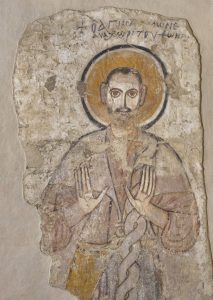
Apa Amone, a hermit from Faras Cathedral, 8th century (Warsaw, National Museum, inv, no. 234038 MN).
On Friday morning, the exchange of ideas and goods as testified by material culture was explored. Dobrochna and I started with wall paintings and we discussed elements of the decorative programmes of Nobadian churches that might have been inspired by the Byzantine and/or Egyptian tradition: saints, hermits and narrative scenes and their location in church interiors.
Magdalena Wozniak presented her research on garments from Nubia in various textile collections in relation to the terminology of the different pieces of clothing and shoes as found in text material, the production centres of textiles, as well as what these garments say about social status, identity and trade. Katarzyna Danys, who had successfully defended her PhD thesis three days earlier, works both in the Aswan area and in Nubia.
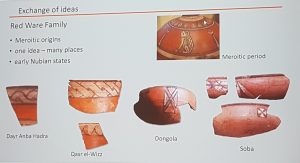
She discussed ceramics, the local production and imports and their possible social implications in two monastic contexts, Dayr Anba Hadra and the Monastery at Qasr al-Wizz.
After coffee, Jacques van der Vliet led the general discussion. He summarized the lines of thought along the various subjects that were explored and discussed, noted lacunae (architecture, for example) and set out directions for further exploration. In the subsequent discussion, subjects like ethnoarchaeology and museology were debated, as well as the need for the participation of specialists from Sudan and Egypt (which is, in fact, often a financial matter). But all present agreed that, apart from the stimulating talks, the real value of the workshop was the demonstration of the fact that we were, as a group, well equipped to see the various topics from a synchronic and diachronic and from a regional and interregional point of view, and to complement and contradict each other.

Our last lunch was a reluctant farewell – we do hope to be able to host a follow-up workshop, in which the subjects that were touched upon here can be explored further and where a place can be found for subjects that we had to leave out because the invited speakers were unable to attend, can find a place.
A big thank you to all our participants and the audience, colleagues and students from the Faculty of History and the Polish Centre for Mediterranean Archaeology, for the enriching and illuminating experiences of the past days – and a Merry Christmas and all best wishes for the New Year!
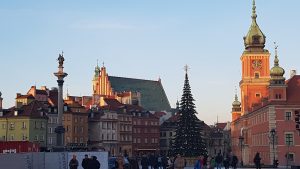
With many thanks to Anna Knapek (NMW) and Aleksandra Pawlikowska-Gwiazda (IA) for their practical help and with many thanks to the sponsors who have made this successful meeting possible:
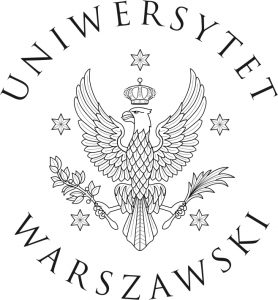 Faculty of History
Faculty of History
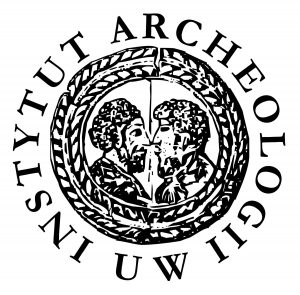 Institute of Archaeology
Institute of Archaeology
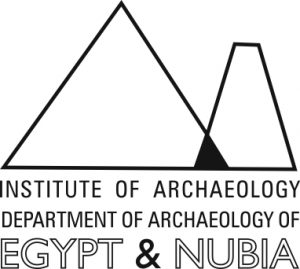 Department of Archaeology of Egypt & Nubia
Department of Archaeology of Egypt & Nubia
 Department of Papyrology
Department of Papyrology
 University of Warsaw Foundation
University of Warsaw Foundation
Postscript
See Alexandros Tsakos’ account of our workshop, discussing several topics in more detail at https://medievalsaiproject.wordpress.com/2019/12/30/wanderings-about-nubian-frontiers-in-warsaw/
